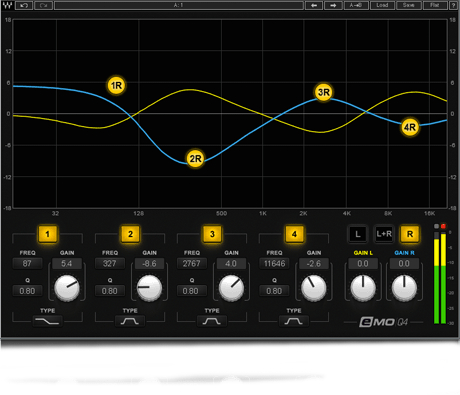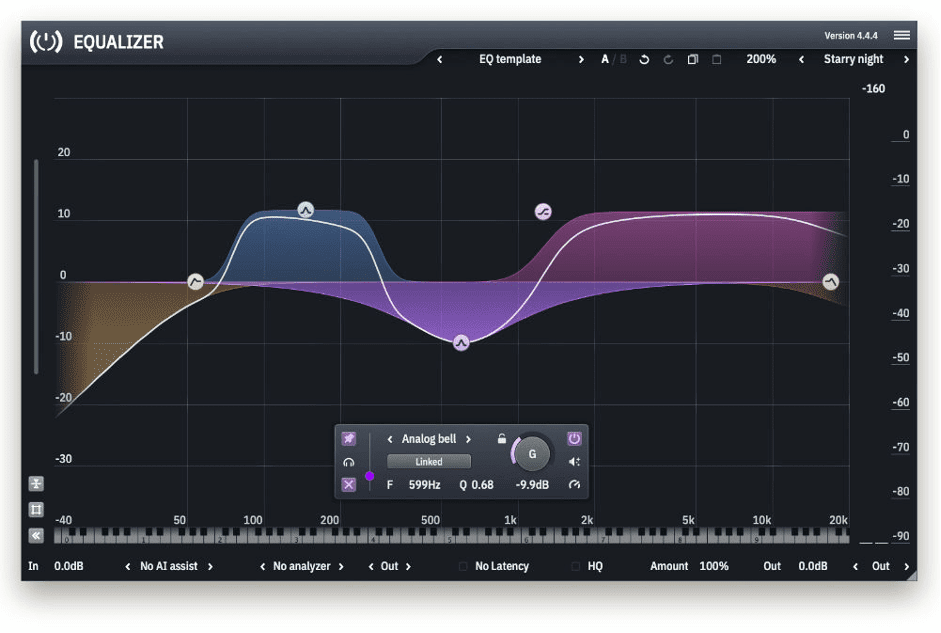- Waves Q10 Paragraphic Eq Download Free
- Waves Q10 Paragraphic Eq
- Vst Plugins Waves Q10-paragraphic Eq Free
Hi,
The world's very first paragraphic EQ, the Q10 delivers precision equalization for mixing and mastering alike. With power and features that. Q10 Paragraphic Equalizer by Waves - Related Products.
I'm learning how to use paragraphic Eqing and have a question
- The world’s very first paragraphic EQ, the Q10 delivers precision equalization for mixing and mastering alike. With power and features that far surpass the capabilities of analog equalizers, the Q10 lets you create special effects and spectral modifications that range from subtle to extreme.
- The world’s very first paragraphic EQ, the Q10 delivers precision equalization for mixing and mastering alike. With power and features that far surpass the capabilities of analog equalizers, the Q10 lets you create special effects and spectral modifications that range from subtle to extreme.
When i'm selecting a frequency on a track, when if I was to edit that frequency and then choose another frequency on the same track, is all the editing i've done for the previous frequency lost?
- Log in or register to post comments
Comments
paragraphic eq
'when if I was to edit'
Error.
What are you using software wise? Is this 'paragraphic' EQ a plugin to something or a stand alone program?
- Log in or register to post comments

paragraphic eq
I'm using cubase sx. It has 4 eq settings high, mid high, mid low, and low.
I'm a little confused myself lol
- Log in or register to post comments
paragraphic eq
I have no experience with what you're talking about. But I have an opinion. Read the manual, try searching this forum and others and play with it and listen to what it does whilst you wait for someone who may know to reply.
- Log in or register to post comments
paragraphic eq


Read the manual. If that doesn't help, go to Steinberg.net and log into the forums. If you can't do that.......BUY YOUR SOFTWARE!
- Log in or register to post comments
paragraphic eq
hueseph wrote: Read the manual. If that doesn't help, go to Steinberg.net and log into the forums. If you can't do that.......BUY YOUR SOFTWARE!

Waves Q10 Paragraphic Eq Download Free
I've read the manual, it doesn't explain how the paragraphic eqaliser works, it only explains what each of the eq settings means.
Waves Q10 Paragraphic Eq
- Log in or register to post comments
paragraphic eq
It's 'parametric', not 'paragraphic'. The term parametric refers to the fact that there are some parameters that you can alter for each frequency. You might be thinking of 'graphic' EQ, which is slightly different.
Anyway, in Cubase as you said there are 4 'frequencies' to choose from - high to low. One of the parameters you can change for each is the specific frequency affected. In other words, you can set your 'low' frequency to be 80 Hz or 113 Hz or whatever you want. Likewise for the other 3 knobs.
Another parameter is 'Q' or shaping, but I won't go into detail here for fear of overload....
To your original question - as I understand it - once you set the parameters for one knob, they stay put while you go on to the next one. So no, your 'editing' shouldn't be lost.
- Log in or register to post comments
paragraphic eq
FYI
Paragraphic EQ's do exist and are very prevalent in today's world of DAW's.
Vst Plugins Waves Q10-paragraphic Eq Free
Waves makes Paragraphic EQ's.
I.E. the Waves Q10...
I'm not familiar with the Original Poster's software, but I have no doubt that it is indeed a paragraphic EQ.
- Log in or register to post comments
paragraphic eq
Graphic refers to the fact that the sliders give you a graphic respresentation of what the eq is doing. A paragrphic eq is simply a parametric eq with a graphic display.
Regarding the OP: If you have read the manual and you still don't understand what each control is doing, I don't know what can help you. How about just using your ears to see what they do? It should be very apparent at that point.
- Log in or register to post comments
paragraphic eq
Thanks for the clarification, Bent! 8-)
http://www.sweetwater.com/expert-center/glossary/t--ParagraphicEqualizer
And here I thought paragraphic eq was eq that started with an indented line and contained a main idea with supporting details. (groan)
I still think that he's working with a parametric eq in Cubase, not paragraphic. But I could be wrong (again). :wink:
- Log in or register to post comments
paragraphic eq
If that's what you think then look it up...
:wink:
- Log in or register to post comments
paragraphic eq
It is a parametric eq with a graphical representation of the frequency plot. You can drag the eq in the graphic display or use the v-knobs.
I know that there are actually hardware paragraphics which have the sliders and q adjustment for each but the one we are talking about in cubase is simply a parametric w/ graphic freq plot.
- Log in or register to post comments